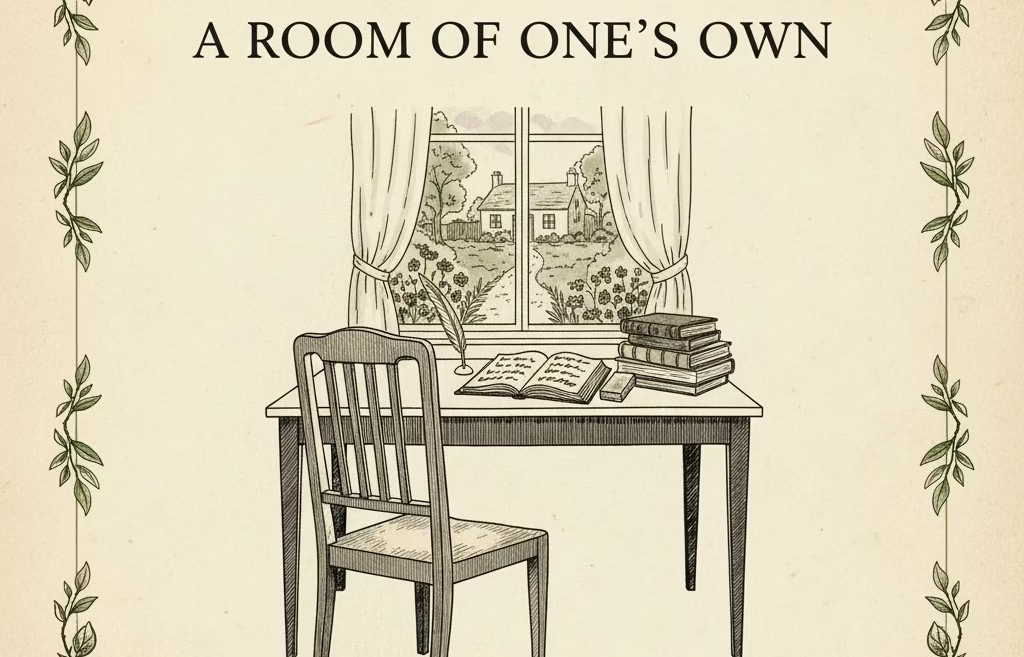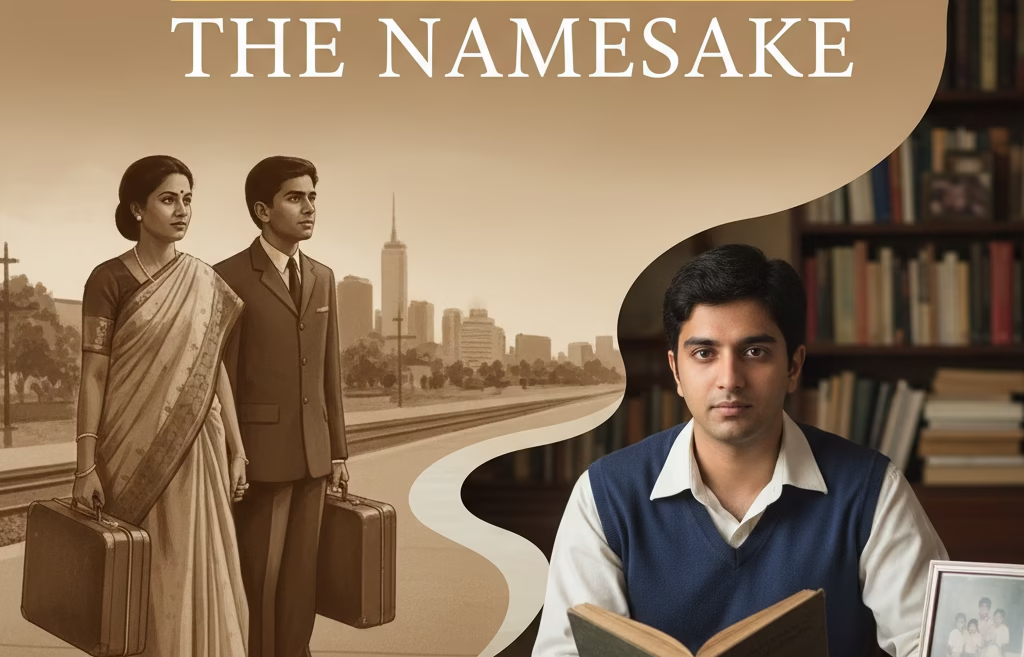INTRODUCTION
When I first encountered Gurdial Singh’s Marhi Da Deeva, it wasn’t in a classroom or a lecture hall — it was in the quiet corners of my university library. The book’s unassuming cover belied the weight it carried. What began as an academic reading for a Dalit literature seminar turned into a deeply personal experience, a mirror reflecting not just the rural Punjab of the 1960s, but the layered complexities of caste, memory, and survival.
This novel didn’t just tell a story; it forced me to rethink my understanding of Punjabi rural life, of the struggles I had perhaps overlooked as a reader, and of the way literature can become an instrument of social truth.
The Beginning
By the time Marhi Da Deeva appeared in 1964, Punjabi literature had already seen romanticised depictions of rural fields, the hard-working peasant, and pastoral tranquility. Gurdial Singh, however, chose to write about the people who were never centred in these celebratory narratives — the landless Dalits, the social ‘invisibles’ whose survival was a daily act of quiet defiance.
Singh’s use of critical realism was revolutionary. In literary theory, critical realism isn’t about simply showing reality — it’s about interrogating it, peeling away the surface to reveal the harsh socio-economic structures beneath. In Singh’s hands, the Punjabi village became a microcosm of caste hierarchies, economic exploitation, and cultural oppression. FULL TEXT
Marhi, the Lamp, and the Symbolism of Fading Hope
I have always believed titles carry a novel’s heartbeat, and Marhi Da Deeva is no exception. The “marhi” (a small shrine or tomb) sits in the story as both a physical object and a lingering metaphor. It is tied to ancestry, memory, and land — all of which are contested spaces for Dalits in the novel.
The “deeva” (lamp) is equally layered. If you’ve ever seen an oil lamp flicker near extinction, you know that last unsteady dance of flame — a stubborn refusal to vanish. In Singh’s novel, this flicker becomes a stand-in for the endurance of dignity even as everything else conspires to snuff it out.
Jagseer Singh: The Reluctant Hero of the Subaltern
The novel centers on Jagseer Singh, a Dalit man caught in the relentless web of poverty, discrimination, and social invisibility. Jagseer’s story is not one of sweeping revolutionary acts but of relentless endurance. His heroism lies in his determination to live with dignity, despite the casteist violence and brutal economic exploitation he faces.
What makes Jagseer compelling as a protagonist is his very ordinariness combined with a deeply human emotional landscape. Unlike idealised figures of resistance, Jagseer is at times resigned, vulnerable, and conflicted, which makes him relatable and authentic. His internal struggles — grappling with despair, hope, familial obligations, and cultural identity — paint a full picture of life at the margins.
From a critical perspective, Jagseer embodies the concept of liminality — the space of ‘in-betweenness’ in caste and class structures. He negotiates social boundaries daily, experiencing exclusion and occasional fleeting inclusion. Personally, I see Jagseer not merely as a character but as a witness and symbol of countless unheard voices, reminding us that heroism also takes the form of survival and quiet defiance.
Caste as the Unseen Fence
Caste acts not only through open brutality but also through hidden social codes. Singh shows how segregation feels natural, shaping where people live, eat, interact, and marry.
Jagseer and his family live apart from upper-caste villagers. They remain on the village’s margins. They cannot access shared resources. This exclusion feels ordinary. People rarely speak about it. Yet invisible barriers block Dalits from dignity and social mobility.
This normalised segregation struck me deeply: how social systems sustain themselves through silent consent and persistent tradition. Singh urges readers to see beyond visible harm. They must notice hidden oppression in daily life. This makes his novel a strong social document.
Bhani and Feminist Resonances
The female characters in Marhi Da Deeva add essential complexity to the narrative, particularly Bhani, whose life reflects the compounded weight of caste and patriarchy. While her presence often remains quiet in the story, it carries deep emotional significance. She represents what feminist scholars term intersectionality — the overlapping of social identities that intensify marginalisation. Through Bhani, the novel reveals how intersecting identities shape both hardship and resilience. Her position as a Dalit woman subjects her to the combined weight of caste oppression and patriarchal constraints, creating multiple layers of disadvantage. At the same time, these very intersections cultivate a quiet strength that defines her endurance. Bhani’s story, subtle yet powerful, becomes a vital thread in the novel’s broader portrayal of life under oppression, and her resilience stands as a testament to the capacity for survival and dignity in the face of compounded marginalisation.
Bhani’s life is restricted by the harsh realities of gender norms that limit her autonomy and voice. She negotiates not only casteist discrimination but also patriarchal expectations, making her a figure of silent resistance. What fascinated me was how Singh avoided melodramatic portrayals; instead, Bhani’s everyday acts of care, endurance, and subtle assertiveness create a powerful feminist subtext.
Her resilience, though often overlooked, contributes to the novel’s broader message about survival and resistance in multiple social dimensions.
Narrative Style: The Rhythm of Oral Memory
One of the most enchanting features of Singh’s writing is his distinctive narrative style. It effortlessly blends formal literary realism with the cadences of Punjabi oral tradition. Raised in Punjabi oral storytelling, I could hear echoes of folk tales and village gossip. Communal memories are seamlessly woven into the prose, enriching it with cultural depth and authenticity.
This oral quality enriches the reading experience by grounding the novel in cultural specificity. It suggests that the novel is not just a written artifact but a living conversation with Punjab’s collective memory. From a scholarly standpoint, this fusion highlights Singh’s innovative method of preserving oral histories within the structure of modern realist fiction, enhancing the novel’s authenticity and cultural resonance. EXPLORE OTHER WRITERS
The Novel’s Place in Dalit Literature
Marhi Da Deeva holds a pioneering place in Punjabi Dalit literature. Published before the widespread emergence of Dalit autobiographies and protest literature, it boldly centers Dalit experiences not as peripheral anecdotes but as the core narrative.
Literary historians, including Kanwal Bharti, credit Singh with breaking new ground by giving voice to Dalit identity against cultural erasure. The novel helped open pathways for subsequent Dalit writers in Punjab, offering a model of rooted yet critical storytelling.
Reflecting personally, I regard this novel as foundational. It sets the stage for a burgeoning literary movement that actively challenges caste hierarchies and advocates for social justice through narrative.
From Page to Film: The 1989 Adaptation
In 1989, Surinder Singh adapted Marhi Da Deeva into a Punjabi film. Years later, I watched it and felt struck by how the visual representation added fresh layers to the text — yet, as any literature lover will tell you, some nuances survive only in words. Scenes that the novel stretches with the slow burn of internal monologue often feel rushed on screen.
Still, the film deserves credit for making Jagseer’s story accessible to audiences beyond readers of Punjabi literature, embedding it into popular cultural memory.
Memory, Loss, and Human Dignity
While caste oppression drives the plot, Singh’s philosophical depth lies in exploring memory and forgetting. The Marhi itself becomes a contested site of remembrance — who deserves to be remembered, and who is written out of history.
Philosophically, this intersects with subaltern studies: the idea that history often ignores those outside elite narratives. On a personal note, I’ve often felt that literature — works like Marhi Da Deeva — serves to restore these “lost lamps” of memory, even if they flicker.
Beyond the overt theme of caste oppression, Marhi Da Deeva deeply probes the dialectic of memory and forgetting. The Marhi functions as a contested site of ancestral memory and cultural identity. It raises questions about whose stories are preserved and whose narratives are erased in history.
This theme intersects with theoretical frameworks in subaltern studies, illuminating how marginalized groups negotiate their place in dominant historical narratives.
On a personal level, this exploration of memory resonates as a call to remembrance and recognition. The novel champions the idea that cultural survival depends on safeguarding these flickering lamps of memory amid forces that would extinguish them.
Personal Takeaway
As a literary academic, I recognize this novel as a landmark in regional realism. But as a reader, I carry Jagseer’s story not for its historical weight alone — but because it gave me an almost uncomfortable clarity about the world around me.
Good literature does that. It moves you beyond empathy into self-questioning.
Conclusion
Marhi Da Deeva is a novel about extinguished hopes — yet it is also a novel stubbornly keeping one flame alive. For readers, that lamp might become a beacon, illuminating not just past injustices but the fault lines in our present. In its elemental symbolism, Marhi Da Deeva speaks of extinguished hopes. More importantly, it celebrates a stubborn light that refuses to fade. This enduring flame becomes a metaphor for resilience in the face of oppression. It illuminates the darkness of historical injustices and the burden of ongoing social struggles. Moreover, Through this imagery, Singh’s novel stands as a beacon of hope and resistance. It urges readers to remain vigilant in the fight for human dignity and justice. It reminds us that even the smallest light can guide us through the deepest shadows.
FAQs
Q1: What is Marhi Da Deeva about?
Ans: Marhi Da Deeva is a Punjabi novel by Gurdial Singh that explores the harsh realities faced by Dalits in rural Punjab. It centres on Jagseer Singh, a Dalit man enduring caste discrimination, poverty, and social exclusion, revealing the broader social structure of caste and class oppression in a feudal village.
Q2: Why is Marhi Da Deeva considered an important novel in Punjabi literature?
Ans: It is acclaimed as the first Punjabi novel to use critical realism to portray the lives of marginalised Dalit communities authentically. Its groundbreaking social critique and focus on Dalit identity mark a turning point, influencing Punjabi and Dalit literature significantly.
Q3: What does the title Marhi Da Deeva symbolise?
Ans: The title means “The Last Flicker” and symbolises the fragile yet persistent flame of hope and dignity in the face of systemic oppression. The “Marhi” (a small shrine or tomb) represents ancestral land, memory, and social exclusion, while the “Deeva” (lamp) captures the enduring yet precarious spirit of the oppressed.
Q4: How does Gurdial Singh depict caste in Marhi Da Deeva?
Ans: Singh reveals caste not only through explicit violence but also through invisible social codes and segregation that govern villagers’ lives—from living spaces to meals, marriages, and social interactions—highlighting the normalised and insidious nature of caste oppression.
Q5: Who is Jagseer Singh and why is he significant?
Ans: Jagseer Singh is the novel’s Dalit protagonist whose life reflects survival amid caste and economic marginalization. He is depicted not as a heroic rebel but as a symbol of quiet resilience and enduring dignity under systemic injustice.





